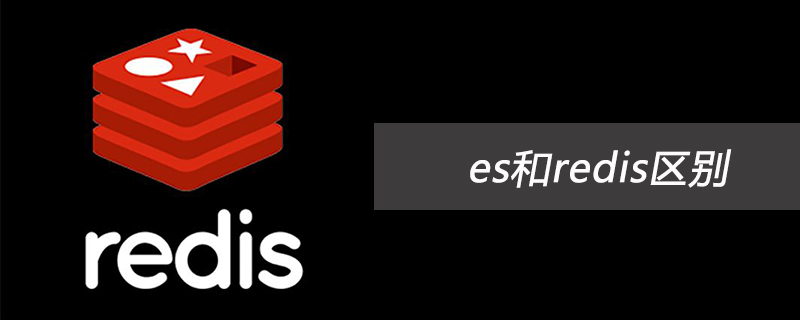Environment preparation
1. Prepare an nginx server ip192.168.1.133 port 81
Installation process:
#首先安装依赖: yum -y install gcc-c++ yum -y install pcre pcre-devel yum -y install zlib zlib-devel yum -y install openssl openssl—devel #注意 : 安装nginx必须使用 root 用户安装 #创建一个nginx目录 mkdir /usr/local/src/nginx #进入到nginx目录 cd /usr/local/src/nginx #下载或上传安装包 wget http://nginx.org/download/nginx.tar.gz 或 rz上传 #解压安装包 tar -xvf nginx.tar.gz #进入到解压后的目录 cd nginx # 下面 才开始正式安装 #把nginx安装到指定用户的目录 mkdir -p /ucenter/soft/nginx #安装配置 prefix为安装目录 user为用户 group为 组 ./configure --prefix=/ucenter/soft/nginx --user=ucenter --group=ucenter #编译 make #安装 make install #在linux系统中由于非root用户不能占用80端口,所以需要使普通用户以root身份启动nginx。 cd /ucenter/soft/nginx/sbin #把soft文件下所有的文件所属者修改为ucener -r 表示递归 chown ucenter:ucenter ./soft/ -r #修改 ./nginx 的所属为root chown root nginx #让普通用户可以使用80端口,可以使用root权限启用nginx chmod u+s nginx #修改配置文件 在修改配置文件之前 ,要备份该文件 cd conf/ # 要注意nginx 的工作进程,一般根据cpu的核数去修改 vim nginx.conf #关闭防火墙,打开80端口 service iptables stop #启动nginx ./nginx #重启nginx ./nginx -s reload #关闭nginx ./nginx -s stop
Prepare a tomcat server, first prepare the java environment, omit the jdk installation steps
Then install 3 tomcat server ip addresses: 192.168.1.143, tomcat1 8080 port, tomcat2 8081 port, tomcat3 Port 8082.

apache-tomcat-7.0.64/conf/server.xml configuration file Modify these three places so that the ports will not conflict
<server port="8005" shutdown="shutdown"> <connector port="8080" protocol="http/1.1" connectiontimeout="20000" redirectport="8443" /> <connector port="8009" protocol="ajp/1.3" redirectport="8443" />
Modify index.jsp in the tomcat root directory, add the identification of each tomcat, and display the session id on the page
<%--
licensed to the apache software foundation (asf) under one or more
contributor license agreements. see the notice file distributed with
this work for additional information regarding copyright ownership.
the asf licenses this file to you under the apache license, version 2.0
(the "license"); you may not use this file except in compliance with
the license. you may obtain a copy of the license at
http://www.apache.org/licenses/license-2.0
unless required by applicable law or agreed to in writing, software
distributed under the license is distributed on an "as is" basis,
without warranties or conditions of any kind, either express or implied.
see the license for the specific language governing permissions and
limitations under the license.
--%>
<!doctype html>
<%@ page session="true" %>
<%
java.text.simpledateformat sdf = new java.text.simpledateformat("yyyy");
request.setattribute("year", sdf.format(new java.util.date()));
request.setattribute("tomcaturl", "http://tomcat.apache.org/");
request.setattribute("tomcatdocurl", "/docs/");
request.setattribute("tomcatexamplesurl", "/examples/");
%>
<html>
<head>
<title><%=request.getservletcontext().getserverinfo() %></title>
<link href="favicon.ico" rel="icon" type="image/x-icon" />
<link href="favicon.ico" rel="shortcut icon" type="image/x-icon" />
<link href="tomcat.css" rel="stylesheet" type="text/css" />
</head>
<body>
<div id="wrapper">
<div id="navigation" class="curved container">
<span id="nav-home"><a href="${tomcaturl}">home--<%=request.getsession().getid() %></a></span>
<span id="nav-hosts"><a href="${tomcatdocurl}">documentation</a></span>
<span id="nav-config"><a href="${tomcatdocurl}config/">configuration</a></span>
<span id="nav-examples"><a href="${tomcatexamplesurl}">examples</a></span>
<span id="nav-wiki"><a href="http://wiki.apache.org/tomcat/frontpage">wiki</a></span>
<span id="nav-lists"><a href="${tomcaturl}lists.html">mailing lists</a></span>
<span id="nav-help"><a href="${tomcaturl}findhelp.html">find help</a></span>
<br />
</div>
<div id="asf-box">
<h1 id="pagecontext-servletcontext-serverinfo">${pagecontext.servletcontext.serverinfo}--8080</h1>
</div>
<div id="upper" class="curved container">
<div id="congrats" class="curved container">
<h2 id="if-nbsp-you-re-nbsp-seeing-nbsp-this-nbsp-you-ve-nbsp-successfully-nbsp-installed-nbsp-tomcat-nbsp-congratulations">if you're seeing this, you've successfully installed tomcat. congratulations!</h2>
</div>
<div id="notice">
<img src="/static/imghwm/default1.png" data-src="tomcat.png" class="lazy" alt="[tomcat logo]" />
<div id="tasks">
<h3 id="recommended-nbsp-reading">recommended reading:</h3>
<h4 id="a-nbsp-href-tomcatdocurl-security-howto-html-security-nbsp-considerations-nbsp-how-to-a"><a href="${tomcatdocurl}security-howto.html">security considerations how-to</a></h4>
<h4 id="a-nbsp-href-tomcatdocurl-manager-howto-html-manager-nbsp-application-nbsp-how-to-a"><a href="${tomcatdocurl}manager-howto.html">manager application how-to</a></h4>
<h4 id="a-nbsp-href-tomcatdocurl-cluster-howto-html-clustering-session-nbsp-replication-nbsp-how-to-a"><a href="${tomcatdocurl}cluster-howto.html">clustering/session replication how-to</a></h4>
</div>
</div>
<div id="actions">
<div>
<a class="container shadow" href="/manager/status"><span>server status</span></a>
</div>
<div>
<a class="container shadow" href="/manager/html"><span>manager app</span></a>
</div>
<div>
<a class="container shadow" href="/host-manager/html"><span>host manager</span></a>
</div>
</div>
<!--
<br />
-->
<br />
</div>
<div id="middle" class="curved container">
<h3 id="developer-nbsp-quick-nbsp-start">developer quick start</h3>
<div>
<div>
<p><a href="${tomcatdocurl}setup.html">tomcat setup</a></p>
<p><a href="${tomcatdocurl}appdev/">first web application</a></p>
</div>
</div>
<div>
<div>
<p><a href="${tomcatdocurl}realm-howto.html">realms & aaa</a></p>
<p><a href="${tomcatdocurl}jndi-datasource-examples-howto.html">jdbc datasources</a></p>
</div>
</div>
<div>
<div>
<p><a href="${tomcatexamplesurl}">examples</a></p>
</div>
</div>
<div>
<div>
<p><a href="http://wiki.apache.org/tomcat/specifications">servlet specifications</a></p>
<p><a href="http://wiki.apache.org/tomcat/tomcatversions">tomcat versions</a></p>
</div>
</div>
<br />
</div>
<div id="lower">
<div id="low-manage" class="">
<div class="curved container">
<h3 id="managing-nbsp-tomcat">managing tomcat</h3>
<p>for security, access to the <a href="/manager/html">manager webapp</a> is restricted.
users are defined in:</p>
<pre class="brush:php;toolbar:false">$catalina_home/conf/tomcat-users.xml
in tomcat 7.0 access to the manager application is split between different users. read more...
release notes
changelog
migration guide
security notices
documentation
tomcat 7.0 documentation
tomcat 7.0 configuration
tomcat wiki
find additional important configuration information in:
$catalina_home/running.txt
developers may be interested in:
getting help
faq and mailing lists
the following mailing lists are available:
-
tomcat-announce
important announcements, releases, security vulnerability notifications. (low volume). -
tomcat-users
user support and discussion -
taglibs-user
user support and discussion for apache taglibs -
tomcat-dev
development mailing list, including commit messages
other downloads
other documentation
get involved
miscellaneous
apache software foundation
copyright ©1999-${year} apache software foundation. all rights reserved
The above is the detailed content of How to use redis session sharing with nginx+tomcat. For more information, please follow other related articles on the PHP Chinese website!
 es和redis区别Jul 06, 2019 pm 01:45 PM
es和redis区别Jul 06, 2019 pm 01:45 PMRedis是现在最热门的key-value数据库,Redis的最大特点是key-value存储所带来的简单和高性能;相较于MongoDB和Redis,晚一年发布的ES可能知名度要低一些,ES的特点是搜索,ES是围绕搜索设计的。
 一起来聊聊Redis有什么优势和特点May 16, 2022 pm 06:04 PM
一起来聊聊Redis有什么优势和特点May 16, 2022 pm 06:04 PM本篇文章给大家带来了关于redis的相关知识,其中主要介绍了关于redis的一些优势和特点,Redis 是一个开源的使用ANSI C语言编写、遵守 BSD 协议、支持网络、可基于内存、分布式存储数据库,下面一起来看一下,希望对大家有帮助。
 实例详解Redis Cluster集群收缩主从节点Apr 21, 2022 pm 06:23 PM
实例详解Redis Cluster集群收缩主从节点Apr 21, 2022 pm 06:23 PM本篇文章给大家带来了关于redis的相关知识,其中主要介绍了Redis Cluster集群收缩主从节点的相关问题,包括了Cluster集群收缩概念、将6390主节点从集群中收缩、验证数据迁移过程是否导致数据异常等,希望对大家有帮助。
 Redis实现排行榜及相同积分按时间排序功能的实现Aug 22, 2022 pm 05:51 PM
Redis实现排行榜及相同积分按时间排序功能的实现Aug 22, 2022 pm 05:51 PM本篇文章给大家带来了关于redis的相关知识,其中主要介绍了Redis实现排行榜及相同积分按时间排序,本文通过实例代码给大家介绍的非常详细,对大家的学习或工作具有一定的参考借鉴价值,希望对大家有帮助。
 详细解析Redis中命令的原子性Jun 01, 2022 am 11:58 AM
详细解析Redis中命令的原子性Jun 01, 2022 am 11:58 AM本篇文章给大家带来了关于redis的相关知识,其中主要介绍了关于原子操作中命令原子性的相关问题,包括了处理并发的方案、编程模型、多IO线程以及单命令的相关内容,下面一起看一下,希望对大家有帮助。
 实例详解Redis实现排行榜及相同积分按时间排序功能的实现Aug 26, 2022 pm 02:09 PM
实例详解Redis实现排行榜及相同积分按时间排序功能的实现Aug 26, 2022 pm 02:09 PM本篇文章给大家带来了关于redis的相关知识,其中主要介绍了Redis实现排行榜及相同积分按时间排序,本文通过实例代码给大家介绍的非常详细,下面一起来看一下,希望对大家有帮助。
 一文搞懂redis的bitmapApr 27, 2022 pm 07:48 PM
一文搞懂redis的bitmapApr 27, 2022 pm 07:48 PM本篇文章给大家带来了关于redis的相关知识,其中主要介绍了bitmap问题,Redis 为我们提供了位图这一数据结构,位图数据结构其实并不是一个全新的玩意,我们可以简单的认为就是个数组,只是里面的内容只能为0或1而已,希望对大家有帮助。
 一起聊聊Redis实现秒杀的问题May 27, 2022 am 11:40 AM
一起聊聊Redis实现秒杀的问题May 27, 2022 am 11:40 AM本篇文章给大家带来了关于redis的相关知识,其中主要介绍了关于实现秒杀的相关内容,包括了秒杀逻辑、存在的链接超时、超卖和库存遗留的问题,下面一起来看一下,希望对大家有帮助。


Hot AI Tools

Undresser.AI Undress
AI-powered app for creating realistic nude photos

AI Clothes Remover
Online AI tool for removing clothes from photos.

Undress AI Tool
Undress images for free

Clothoff.io
AI clothes remover

AI Hentai Generator
Generate AI Hentai for free.

Hot Article

Hot Tools

Dreamweaver CS6
Visual web development tools

DVWA
Damn Vulnerable Web App (DVWA) is a PHP/MySQL web application that is very vulnerable. Its main goals are to be an aid for security professionals to test their skills and tools in a legal environment, to help web developers better understand the process of securing web applications, and to help teachers/students teach/learn in a classroom environment Web application security. The goal of DVWA is to practice some of the most common web vulnerabilities through a simple and straightforward interface, with varying degrees of difficulty. Please note that this software

WebStorm Mac version
Useful JavaScript development tools

Atom editor mac version download
The most popular open source editor

MinGW - Minimalist GNU for Windows
This project is in the process of being migrated to osdn.net/projects/mingw, you can continue to follow us there. MinGW: A native Windows port of the GNU Compiler Collection (GCC), freely distributable import libraries and header files for building native Windows applications; includes extensions to the MSVC runtime to support C99 functionality. All MinGW software can run on 64-bit Windows platforms.







